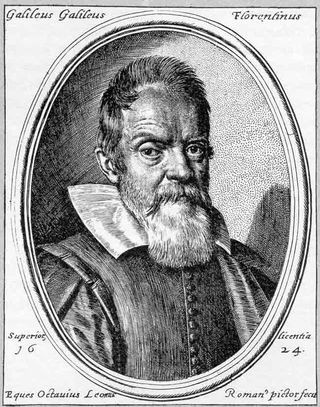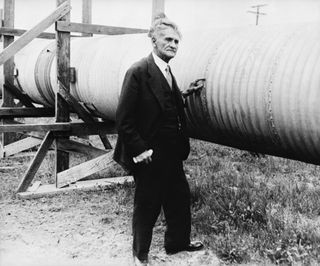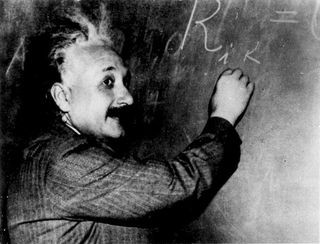Are you fascinated by the universe and the mind-boggling speeds within it? The question of “How Fast Does Light Travel In Mph” is a gateway to understanding fundamental physics and the vast distances of the cosmos. SIXT.VN helps you explore not just the universe’s speed limit but also the wonders of Vietnam, offering seamless travel experiences that feel almost as fast as light! From airport transfers to guided tours, we ensure your journey is smooth, efficient, and unforgettable. Discover the speed of light and the speed of convenience with SIXT.VN.
1. What Is The Speed Of Light?
The speed of light in a vacuum is exactly 299,792,458 meters per second, or approximately 670,616,629 miles per hour (mph). This universal constant, often denoted as “c,” is the ultimate speed limit in our universe, as defined by Albert Einstein’s theory of special relativity. Nothing that possesses mass can travel faster than light.
- Universal Constant: The speed of light is a fundamental constant used in numerous physics equations.
- Einstein’s Relativity: Einstein’s theory of special relativity, a cornerstone of modern physics, hinges on the principle that nothing with mass can exceed the speed of light. As an object approaches this speed, its mass would become infinite, requiring an infinite amount of energy to accelerate further.
- Definition of Measurements: The U.S. National Institute of Standards and Technology uses the speed of light to define international standard measurements, including the meter. From the meter, other units like miles, feet, and inches are derived, highlighting the speed of light’s crucial role in defining our measurement systems.
 Abstract, futuristic image of blue light streaks radiating outward, giving the impression of rapid movement or traveling at high speed, inspired by the concept of faster-than-light travel
Abstract, futuristic image of blue light streaks radiating outward, giving the impression of rapid movement or traveling at high speed, inspired by the concept of faster-than-light travel
2. Why Is The Speed Of Light Important?
The speed of light is significant for several reasons, impacting our understanding of the universe, our measurement systems, and the possibilities of space travel.
- Cosmic Speed Limit: As mentioned earlier, the speed of light functions as a speed limit for matter within the universe. According to Einstein’s special relativity theory, as matter approaches the speed of light, its mass increases infinitely, making it impossible to surpass this cosmic barrier.
- Looking Back in Time: Light travels at a finite speed, meaning when we observe distant objects in space, we are seeing them as they were when the light left them. For instance, light from the sun takes about 8 minutes to reach us, so we see the sun as it was 8 minutes ago. This principle allows astronomers to study the universe’s past by observing light from distant galaxies, offering insights into the universe’s evolution since the Big Bang.
- Defining Measurements: The speed of light is used to define fundamental units of measurement. The meter, which is the base unit of length in the International System of Units (SI), is defined by the distance light travels in a vacuum during a specific fraction of a second. This precise definition ensures consistency and accuracy in scientific measurements worldwide.
3. What Is A Light-Year And How Is It Used?
A light-year is a unit of distance, not time, representing the distance light travels in one year. It is used to measure vast distances in the universe.
- Definition: One light-year is approximately 6 trillion miles (10 trillion kilometers).
- Measuring Cosmic Distances: Astronomers use light-years to measure distances between stars, galaxies, and other cosmic objects. For example, the nearest star system to our own, Alpha Centauri, is about 4.3 light-years away.
- Understanding the Universe’s History: Because light takes time to travel, observing objects millions or billions of light-years away means seeing them as they were millions or billions of years ago. This allows astronomers to study the early universe and its evolution.
3.1. How Long Would It Take To Travel One Light-Year?
Traveling one light-year is an immense undertaking.
- By Airplane: An airplane traveling at 600 mph (965 km/h) would take approximately 1.1 million years to travel one light-year.
- By Spacecraft: Even with advanced spacecraft, traveling one light-year would take thousands of years. For example, if a crewed spacecraft like the Apollo lunar module were used, the journey would take around 27,000 years. According to the BBC Sky at Night Magazine.
4. Expert Insights On The Speed Of Light
Dr. Rob Zellem, a staff scientist at NASA’s Jet Propulsion Laboratory, offers valuable insights into the speed of light:
- Nothing is Faster: “Nothing! Light is a universal speed limit and, according to Einstein’s theory of relativity, is the fastest speed in the universe: 300,000 kilometers per second (186,000 miles per second).”
- Speed of Light Constant? “The speed of light is a universal constant in a vacuum, like the vacuum of space. However, light *can* slow down slightly when it passes through an absorbing medium, like water (225,000 kilometers per second = 140,000 miles per second) or glass (200,000 kilometers per second = 124,000 miles per second).”
- Who Discovered the Speed of Light? “One of the first measurements of the speed of light was by Ole Rømer in 1676 by observing the moons of Jupiter. The speed of light was first measured to high precision in 1879 by the Michelson-Morley Experiment.”
- How Do We Know the Speed of Light? “Ole Rømer was able to measure the speed of light by observing eclipses of Jupiter’s moon Io. When Jupiter was closer to Earth, Rømer noted that eclipses of Io occurred slightly earlier than when Jupiter was farther away. Rømer attributed this effect to the time it takes for light to travel over the longer distance when Jupiter was farther from the Earth.”
5. How Was The Speed Of Light Discovered?
The discovery of the speed of light was a gradual process involving numerous scientists and philosophers over centuries.
 Galileo Galilei is credited with discovering the first four moons of Jupiter.
Galileo Galilei is credited with discovering the first four moons of Jupiter.
- Early Philosophers: Ancient Greek philosophers like Empedocles and Aristotle debated the nature of light. Empedocles believed light had a travel rate, while Aristotle thought it was instantaneous.
- Galileo’s Experiment: In the mid-1600s, Galileo Galilei attempted to measure the speed of light by having two people on hills flash lanterns to each other. However, the distance was too short to record the speed accurately.
- Ole Rømer’s Observation: In the 1670s, Danish astronomer Ole Rømer observed the eclipses of Jupiter’s moon Io and noticed discrepancies in their timing. He concluded that the variations were due to the time it took light to travel from Io to Earth, providing the first estimate of the speed of light.
- James Bradley’s Calculations: In 1728, English physicist James Bradley calculated the speed of light based on the change in the apparent position of stars caused by Earth’s orbit around the sun, achieving an accuracy within 1% of the real value.
- Hippolyte Fizeau and Léon Foucault: In the mid-1800s, French physicists Hippolyte Fizeau and Léon Foucault used terrestrial experiments to measure the speed of light, with Fizeau using a rotating toothed wheel and Foucault using a rotating mirror.
- Albert A. Michelson’s Experiments: Albert A. Michelson refined the measurement of the speed of light through multiple experiments. In 1879, he improved Foucault’s method, and later, he used a mile-long vacuum tube to minimize the effects of air on light speed.
6. Albert Michelson’s Contributions
Albert A. Michelson made significant contributions to understanding the speed of light and the nature of light itself.
 Dr. Albert A. Michelson stands next to a large tube supported by wooden beams.
Dr. Albert A. Michelson stands next to a large tube supported by wooden beams.
- Early Life and Education: Born in Poland and raised in California, Michelson developed an interest in physics while attending the U.S. Naval Academy.
- Refining Measurements: In 1879, Michelson improved upon Foucault’s method, achieving a measurement of 186,355 miles per second (299,910 km/s), which was the most accurate for 40 years.
- Michelson-Morley Experiment: Michelson, along with Edward Morley, conducted the famous Michelson-Morley experiment to detect the luminiferous aether, a hypothetical medium through which light was thought to travel. The experiment failed to detect the aether, leading to the conclusion that light can travel through a vacuum.
- Nobel Prize: Michelson’s revolutionary work earned him the Nobel Prize in Physics, making him the only person to win the prize for a “non-discovery.”
7. Special Relativity And The Speed Of Light
Einstein’s theory of special relativity revolutionized our understanding of space, time, and the speed of light.
 Albert Einstein writing on a blackboard.
Albert Einstein writing on a blackboard.
- E=mc²: Einstein’s famous equation, E=mc², demonstrates the relationship between energy (E), mass (m), and the speed of light (c). It shows that small amounts of mass contain enormous amounts of energy, with the speed of light squared serving as a conversion factor.
- Immutable Constant: Special relativity requires the speed of light to be a constant, regardless of the observer’s motion. This means that light moves through a vacuum at the same speed, no matter how fast the observer is moving.
- Speed Limit: According to special relativity, objects with mass cannot reach the speed of light. As an object approaches this speed, its mass and the energy required to move it would become infinite, making it an impossibility.
8. Does Anything Travel Faster Than Light?
While the speed of light is the ultimate speed limit for objects with mass, there are phenomena in the universe that appear to exceed it.
- Expansion of the Universe: The universe expands at a rate faster than the speed of light. According to astrophysicist Paul Sutter, the universe expands at a rate of a little more than 42 miles (68 kilometers) per second for each megaparsec of distance from the observer.
- General Relativity: Einstein’s theory of general relativity allows for different behaviors when examining the universe on a large scale. Distant galaxies can recede from us at speeds faster than light due to the expansion of space itself.
9. Does Light Ever Slow Down?
While the speed of light in a vacuum is constant, it can slow down when traveling through materials.
 A sparkling diamond amongst dark coal-like rock.
A sparkling diamond amongst dark coal-like rock.
- Refractive Index: The amount that a material slows down light is called its refractive index. Light bends when it encounters particles, reducing its speed.
- Examples: Light travels almost as fast in Earth’s atmosphere as in a vacuum, but it slows to less than half its speed when passing through a diamond.
- Trapping Light: Researchers have found ways to trap and even stop light using ultra-cold clouds of atoms or at “exceptional points” where light emissions intersect.
10. Can We Travel Faster Than Light?
The concept of faster-than-light travel is a popular theme in science fiction.
- Warp Speed: Science fiction often uses the idea of “warp speed” to allow characters to travel between star systems quickly.
- Theoretical Possibilities: While not guaranteed, faster-than-light travel might be possible if we can manipulate space-time. One proposed idea involves creating a space-time bubble around a spaceship, allowing it to travel vast distances without exceeding the speed of light within the bubble.
FAQs About The Speed Of Light
- How fast is the speed of light in miles per hour?
The speed of light is approximately 670,616,629 miles per hour (mph). - Is the speed of light constant everywhere?
The speed of light is constant in a vacuum but can slow down when passing through materials like water or glass. - What is a light-year?
A light-year is the distance light travels in one year, about 6 trillion miles. - Why is the speed of light important in physics?
It is a fundamental constant that serves as a speed limit for the universe and is crucial in understanding relativity and the relationship between energy and mass. - How was the speed of light first measured?
Ole Rømer made one of the first estimates by observing the eclipses of Jupiter’s moon Io. - Can humans travel at the speed of light?
No, objects with mass cannot reach the speed of light due to the infinite energy required. - Does anything travel faster than light?
The expansion of the universe can occur at a rate faster than the speed of light. - What is Einstein’s theory of special relativity?
It is a theory that unifies energy, matter, and the speed of light, stating that the speed of light is constant for all observers. - How does the refractive index affect the speed of light?
The refractive index of a material determines how much it slows down light as it passes through. - What is the Michelson-Morley experiment?
An experiment that attempted to detect the luminiferous aether, leading to the conclusion that light can travel through a vacuum.
Understanding the speed of light opens a window into the fundamental laws of the universe. And just as the speed of light allows us to traverse cosmic distances in theory, SIXT.VN helps you navigate the wonders of Vietnam with ease and speed.
Are you ready to explore the vibrant culture and stunning landscapes of Vietnam? SIXT.VN offers a range of services to make your trip seamless and unforgettable.
- Airport Transfers: Start your journey stress-free with our reliable airport transfer services.
- Hotel Bookings: Find the perfect accommodation to suit your needs and budget.
- Tours of Hanoi: Discover the rich history and vibrant culture of Hanoi with our expertly guided tours.
- Flight Bookings: Secure the best flights to and from Vietnam with our convenient booking service.
Contact SIXT.VN Today!
- Address: 260 Cau Giay, Hanoi, Vietnam
- Hotline/Whatsapp: +84 986 244 358
- Website: SIXT.VN
Let SIXT.VN accelerate your travel experience in Vietnam, ensuring every moment is as enlightening and exciting as understanding the speed of light.



